Drugs, dismemberment led 'great kid' Scott Dozier to Nevada's death row
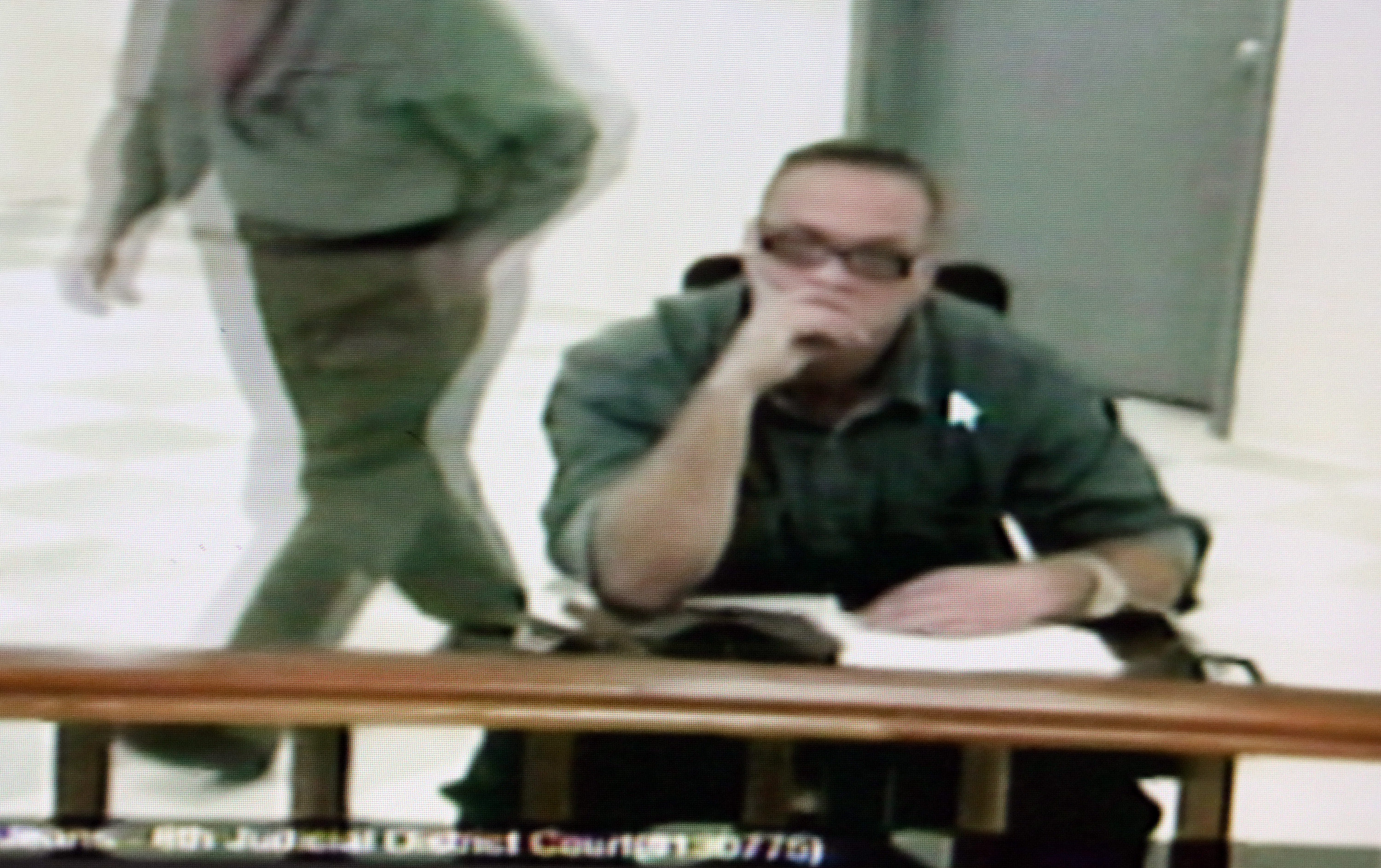
Gloria Buksa lived in what she described as an unusually quiet apartment complex in southwest Las Vegas. So she took note when she heard an “extremely loud” thump late on the night of April 24, 2002.
It was so loud, in fact, that she thought her car must have been hit in its spot just outside her apartment. So she got up from her reading and peered out the window of her unit in the Copper Sands Apartments.
She couldn’t see anything. The engine she heard idling was gone. She figured that if her car was dented, she would confirm the bad news in the morning.
But what she got the next morning was a knock on the door. It was a police officer, asking if she noticed anything funny around the Dumpster recently.
She told him about the thump.
Later, she had to move her car from its normal spot at the complex. The car was fine, but it was encircled with yellow police tape.
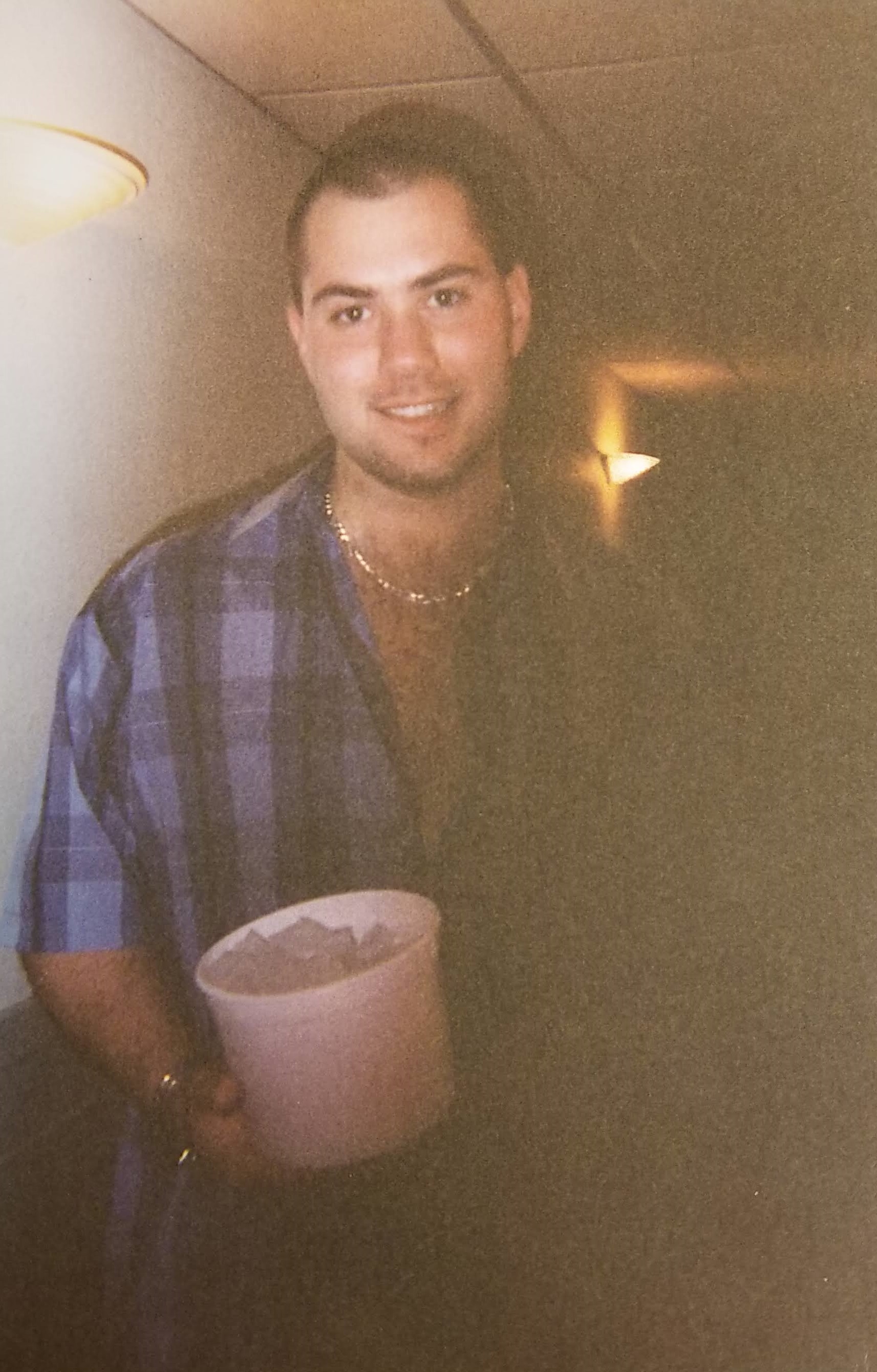
Inside that Dumpster, inside a suitcase, was the decapitated, dismembered body of Jeremiah Miller. His family in Arizona described the 22-year-old as a jokester, someone who could light up the room, but he was also someone who had lately become entangled in the dark world of methamphetamine.
The gruesome discovery was the start of a murder investigation that would ultimately lead to the conviction and sentence of death for Scott Dozier five years later. Smart, artistic and popular with the ladies, Dozier, now 47, was raised in a stable family like Miller’s and was described by those who knew him as caring and thoughtful.
But he was also deep into the methamphetamine world, with a rap sheet that would later include a second murder conviction linked to drugs, and with what one psychologist described as a personality disorder and narcissistic tendencies. Clark County prosecutors successfully made the case that the down-and-out Dozier killed Miller for $12,000 the victim had brought to Vegas to buy meth-making supplies and then used the money to buy a camcorder from Best Buy and shower girlfriends with gifts.
Aside from witness testimony, though, there’s no indication that Dozier ever publicly admitted to Miller’s death.
After a setback in an attempt to challenge the Arizona murder conviction, Dozier announced in 2016 that he would voluntarily give up the appeals process and offer himself up to the death sentence he had received. Nevada has about 80 people on death row, but the state hasn’t had an execution for 12 years because of the prolonged legal wrangling of appeals.
Dozier’s determination has tested the limits of a state that’s an infrequent practitioner of capital punishment, forcing it to devise new lethal injection combinations to skirt pharmaceutical companies’ refusals to supply drugs for deaths. A court challenge over whether the untried method was humane wound its way to the Nevada Supreme Court, delaying the planned execution by about eight months, and his Wednesday execution could be stalled as a drugmaker protests the use of their product in Dozier’s death.
Now on the brink of his sentence being carried out, his attorney told the Las Vegas Review-Journal, Dozier doesn’t want anyone challenging an altered lethal injection combination in court anymore. He’s not unstable, experts have said, but he is positively done with living after a decade behind bars.
“I don’t want to die,” he told a reporter from The Marshall Project news site in a prison interview a few months back. “I just would rather be dead than do this.”
Early years
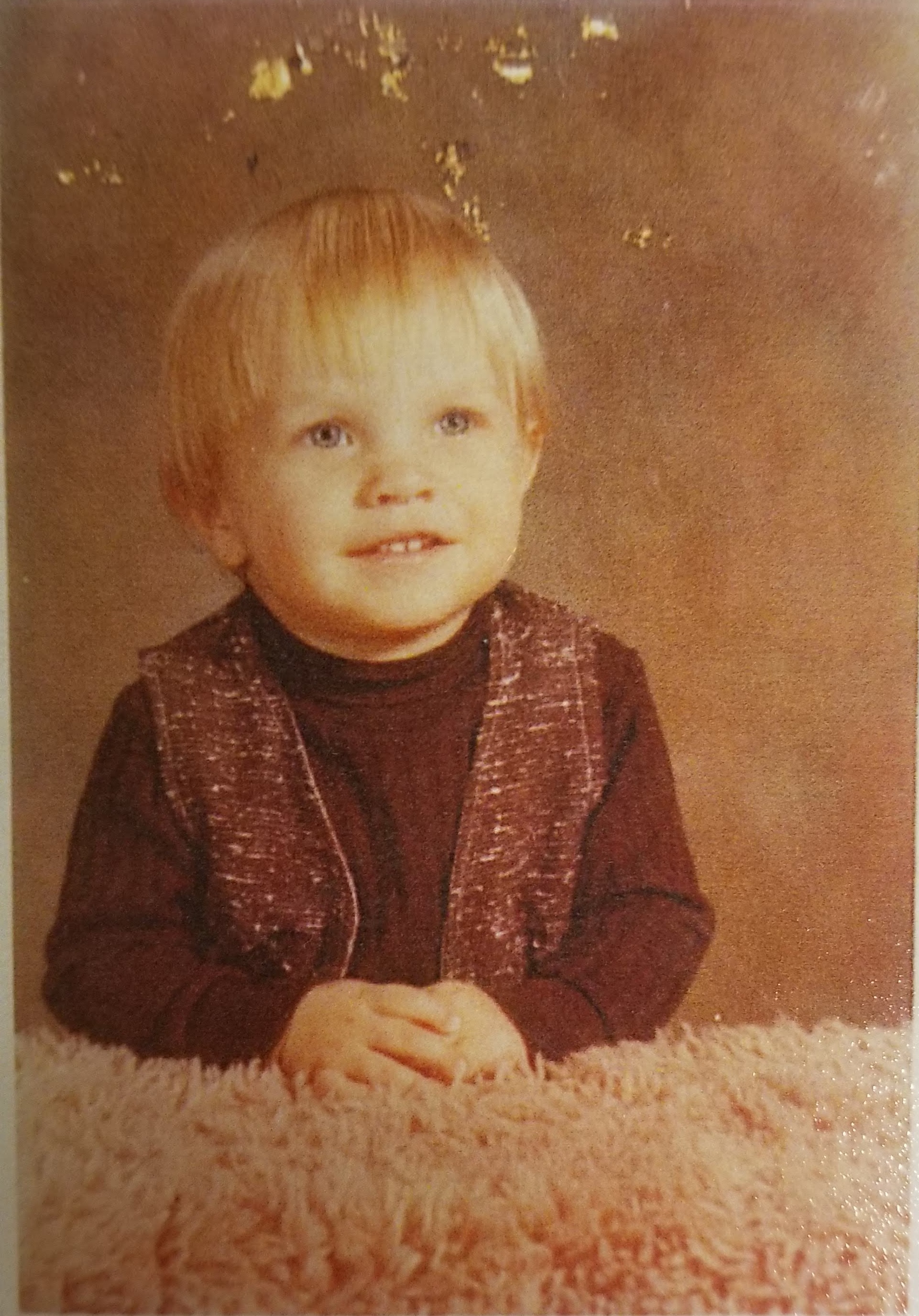
Court transcripts and testimony from family members, acquaintances and psychologists during his 2007 trial help paint a picture of the convicted man’s unlikely journey to death row. Scott Raymond Dozier was born to Larry, a government worker, and Martha Dozier on Nov. 20, 1970 in Great Falls, Montana.
A precocious child and an early talker, the only difficult part of those early years, according to his mother, was that Dozier didn’t sleep much. A doctor advised her to put him on tranquilizers, but she didn’t think that was safe for her baby, and she toughed it out as Dozier made several visits each night to the couple’s bedroom.
Things changed when Dozier was 4 ½ and his younger brother, David, was born, and the two boys shared a room. Later on, Scott Dozier would help David Dozier with homework, college projects and volunteer work and would “screen” his siblings’ friends to keep away the bad apples.
Dozier was “basically the best older brother you could ask for,” David Dozier, who is now a financial adviser with Bank of America, wrote in a letter that was read at his older brother’s trial. “One of the most intelligent people I’ve met, great artist, and most of all, a genuinely good-hearted person.”
Later, his sister was born. She became a scientist.
The family moved around frequently, but the moving didn’t particularly seem to bother Dozier. He loved soccer and was in the gifted and talented program in school.
His teachers would tell his mother, “Scott is a great kid … but he talks too much.”
The family was close-knit, traveling together on family vacations out to the Midwest. His mother made birthday cakes for all the children, and showed a picture of one from his 12th birthday to the court — it was a cake shaped like an ice cream cone.
“He had a quite good childhood and family life,” according to Louis Mortillaro, a psychologist who evaluated him in 2005 amid accusations that he’d killed two people. “This is unusual. This is not often seen.”
But Dozier faced trying times in his youth. At age 5, his grandfather, a Pearl Harbor veteran and lieutenant colonel in the Air Force, committed suicide. The two had been very close.
He told a psychologist later that he had been molested and raped by a teenage boy between the ages of 5 and 7.
And things took a turn when the family moved from a small town in South Dakota to Boulder City. As his mother describes it, the desert town was filled with richer kids and people who weren’t as friendly as those in their past.
By the eighth grade, Dozier found himself doing time at Spring Mountain Youth Camp, a juvenile detention facility.
The family later moved to Phoenix, where Dozier got a job at an Italian restaurant and would eventually graduate from high school in 1989. A natural artist who had previously done work in charcoal and pastel, Dozier’s mother and father paid for oil painting lessons for him.
His parents displayed Dozier’s artwork in their home even after after he was incarcerated, and family members maintained a Facebook page for years with images of the work Dozier had completed in prison.
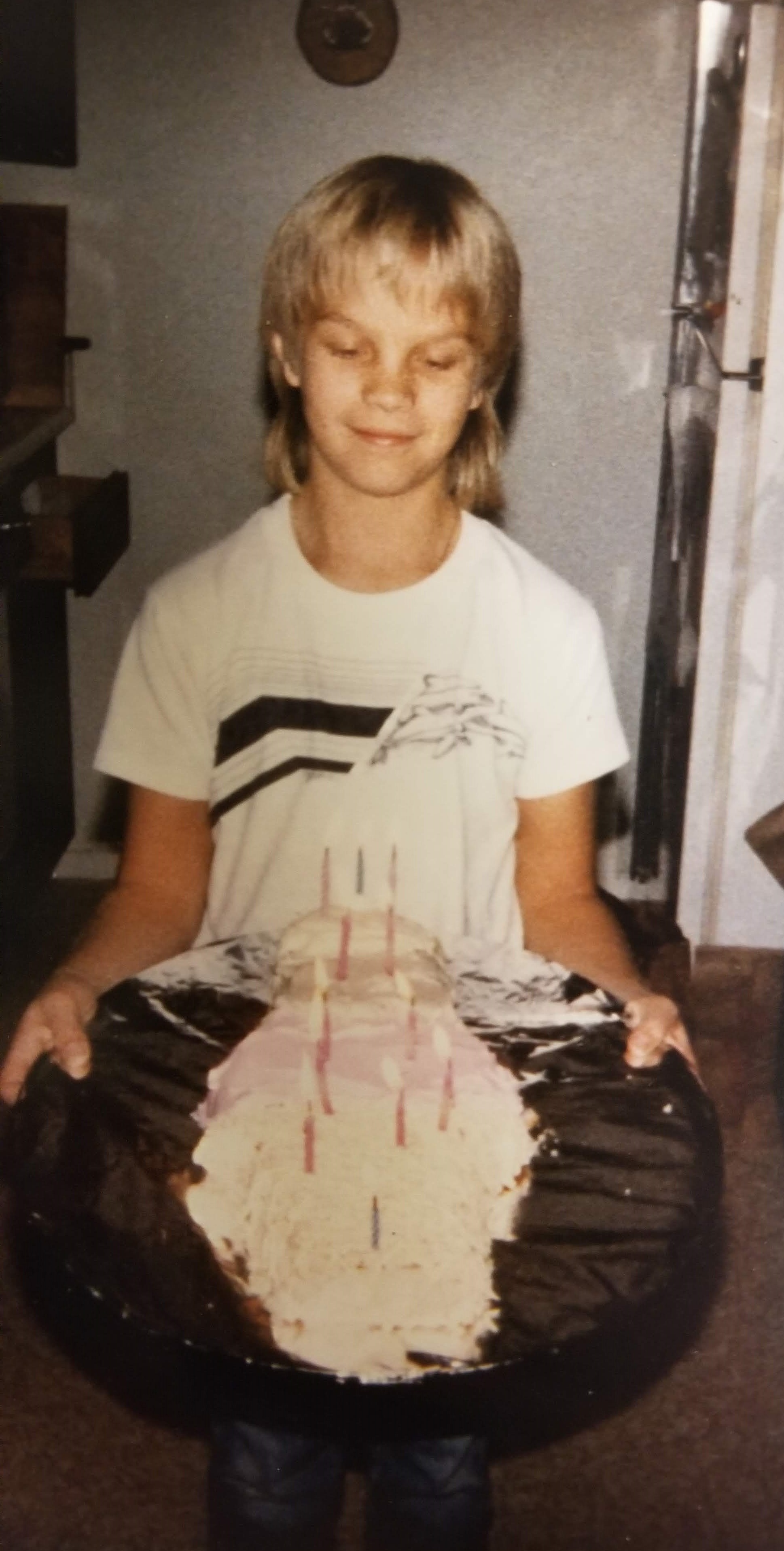
Marriage
Angela Drake told the court she met Dozier, her future husband, when she was 15 and living in Boulder City. She remembered him as a friend who always treated her with respect.
“He was always the charming person in school, but I was kind of not,” said Drake, who went on to be a professional dancer and singer in the since-closed, special effects-laden Las Vegas Strip production EFX.
She saw admirable qualities in him — he was like a father to a young boy his parents had taken into their home. The two married on New Year’s Day in 1991, shortly after he enlisted in the Army.
Dozier served in the military from Nov. 16, 1990 to Aug. 10, 1992, when he was honorably discharged.
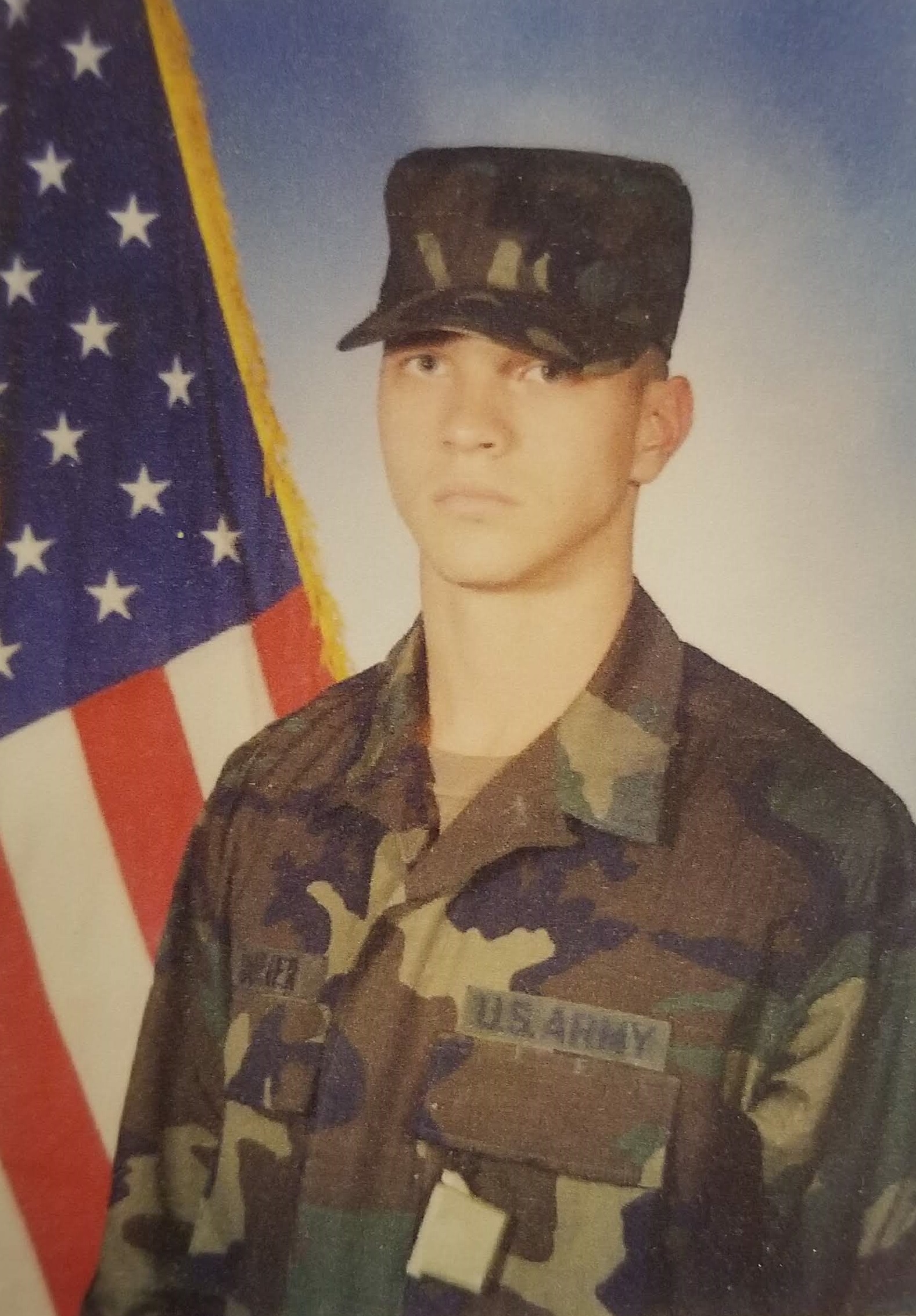
At trial, she painted a picture of her husband so sensitive that he got a trained as an EMT while she was pregnant -- not for a job, but just so he could respond to any complications. Their child, Ashton, was born in 1993.
Eventually, the couple divorced. Drake attributed the downfall of their marriage in part to her mother.
“I have a really, really strict Catholic upbringing and my mom didn’t like boys,” Drake said, “let alone someone like Scott who just really loved me.”
Drake later remarried and had three daughters, moving to Hawaii with Ashton. But Dozier remained involved the children’s lives. He likes to draw homemade birthday cards for the girls each year with intricate drawings of frogs, mermaids and bears, she said.
Drake’s partner has even helped fund Dozier’s appeal of the Arizona case, according to The Marshall Project (Condemned inmates are allowed a limited number of interviews before their execution. Dozier has not responded to requests for interviews from The Nevada Independent.)
Dozier’s son Ashton, 14 at the time, testified in the Nevada trial that he loved his dad and they used to work on cars together. It was a pastime that Dozier’s father Larry Dozier, too, said he enjoyed with his son.
Dozier even sent a lighthearted birthday card to Drake’s mother — the one who didn’t like him.
“Happy 29th Birthday,” it said.
He signed it “Scotty.”
Drugs and charm
Dozier’s path veered into drugs as he became a teenager. It led him to an arrest in Boulder City in 1989, the year he graduated from high school.
“He’s been a good son to me when he has not been involved with drugs,” his dad, Larry, testified.
But if avoiding drugs was the goal, Las Vegas in the mid- to late-1990s wasn’t the place to be. The area was a hotbed for meth labs, and it was before Congress passed legislation making it harder to get the over-the-counter cold medicines that are the precursors of the drug, Las Vegas police Det. George Sherwood testified in court.
In 1995, Dozier was arrested in North Las Vegas with Valium, meth and rohypnol, better known as the date rape drug.
In 1998, a home he lived in on Cinderella Lane in Las Vegas exploded under mysterious circumstances, gravely injuring a young woman named Kacy Kimball. She lost her right arm below the elbow and right leg below the knee and later sued Southwest Gas; she still asserts the incident was not a meth lab explosion.
Dozier, wanted on warrants, still made his way to the hospital to visit her.
“I do not see the monster that the authorities say Scott is,” Kimball wrote in a letter read at trial. “I see a boy who loved me with all his heart and would do anything for me.”
His life, as laid out in court documents, was never short on girlfriends and meth.
Even in his troubled years, Dozier seemed to charm all those around him. Andrew Leavitt, an attorney who defended him in a variety of smaller cases ahead of the murder charges, said Dozier was always punctual and meticulous and testified that he is a personal friend.
Arizona killing
Before his Las Vegas trial, Dozier was convicted of another murder in Arizona that prosecutors believe happened sometime between July 26, 2001 and March 1, 2002, before Jeremiah’s death.
Gary Powell, an incarcerated drug associate who testified he had known Dozier for about a decade, told police that Dozier had killed Miller and he could prove it because he had helped Dozier bury another body, prosecutors said. Powell led authorities to Arizona, where they found the badly decomposed, mummified body of 26-year-old Jasen “Griffin” Greene on Sept. 23, 2002, just outside Phoenix city limits in a shallow grave covered with a large wooden spool.
Greene and Dozier had lived together in a trailer off of Arizona’s “Carefree Highway.” Maricopa County prosecutor George Gialketsis says Dozier later started to see his roommate, who had absconded from a furlough from jail, as a “security threat” who could tip police off to the meth operation if they caught him.
As prosecutors tell it, Greene was bent over reading a magazine when Dozier shot him in the back of the head. Struggling to hide the the body of the 6’2” Greene, he put him in a closet and asked his friend Wolsanger for help disposing of it.
After the body was wrapped in Visqueen plastic wrap, a ranch hand and meth user named Roy Comesrunningbuck helped dump the body. But got in trouble when a rancher named Quinn found it, noticed a foul odor and started asking questions, Gialketsis said.
Greene’s body apparently sat in a large plastic tote box in a truck for months. But worried that authorities trying to serve eviction papers would find the gruesome contents, Powell and Wolsanger buried the body.
After a 12-day trial, Dozier was sentenced in 2005 to 22 years in prison for the killing. But in his appeal of the Arizona conviction, as described by The Marshall Project, Dozier’s story is that he simply found Greene’s body after arriving home and disposed of it in an effort to keep police from finding his meth-cooking operation.
Miller’s story
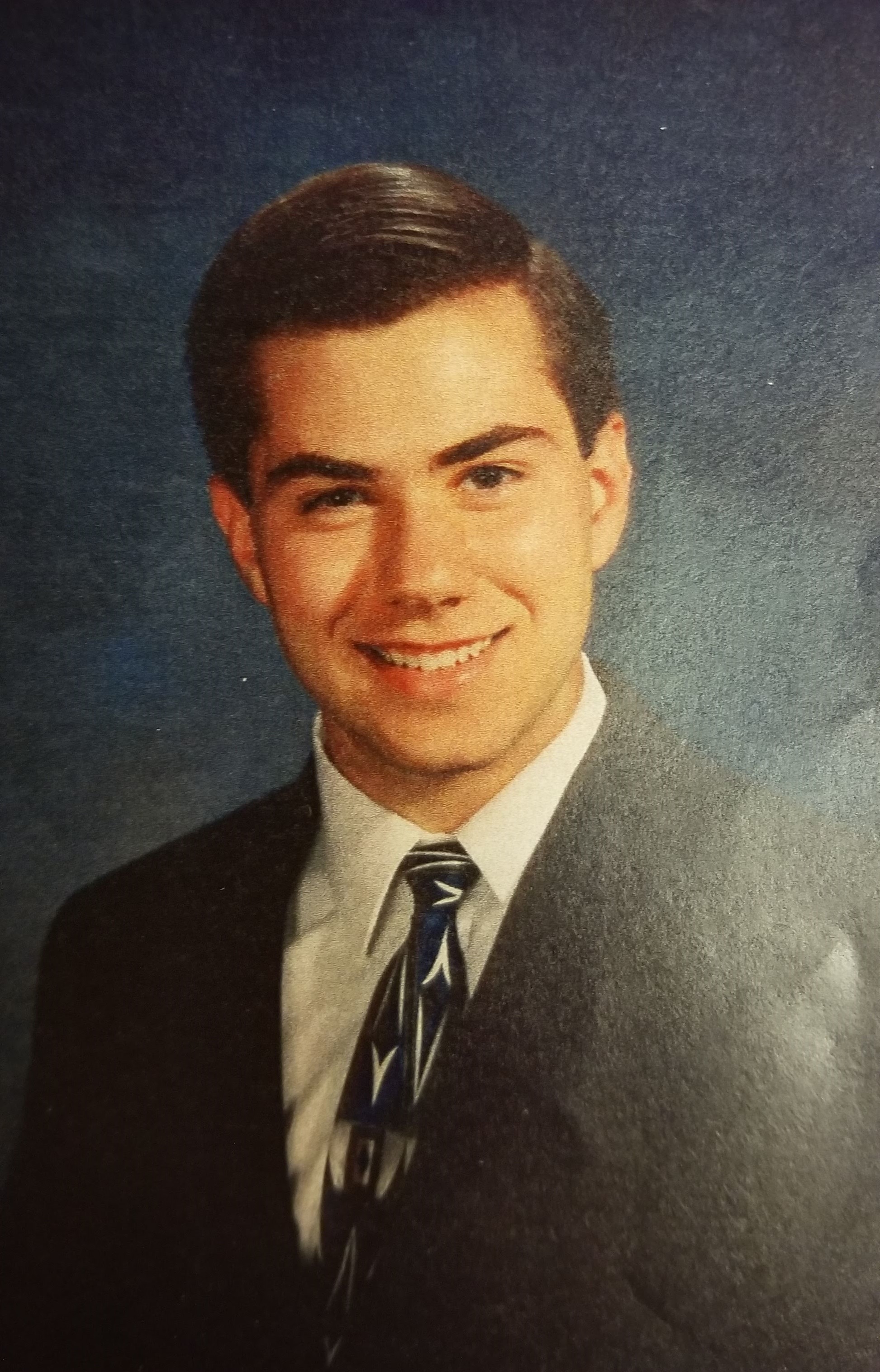
Jeremiah Miller came from a stable family too, hailing from a small town and with lots of contact with his extended family. He loved the outdoors, basketball and football, woodworking, landscaping and driving Bobcats.
“He was a very loving individual,” said his father, David Miller, who recalled their times lifting weights and playing pool together. “He loved children. He loved older people.”
He graduated from high school in 1997 and was studying to be an elementary and special ed teacher, first in community college and later at Arizona State University. Fluent in Spanish, he spent time building houses with the charitable organization Habitat for Humanity and told family he wanted to help underprivileged kids.
“He said if I can become a teacher and I can help them in kindergarten through third or fourth grade, I might be able to help them and keep them out of the garbage they might get into,” his father testified.
Miller met Martha Hernandez in high school and married her in January 2001, before the couple moved away to Peoria, Arizona.
While Miller’s mother, Kimarie, said she wanted to try to give the newlyweds their space, they still kept in touch. But she said she knew nothing about his entrance into the world of meth and the downward spiral described by other people who knew him.
Miller, Dozier and drugs
For about a year before his death, Miller hadn’t been working or going to school but was selling drugs, according to his friend, Jason Schall. Schall testified that Miller’s connections came through the family of his wife Martha, but that he was later cut off from those relatives and was struggling financially.
Miller was eager to learn how to cook meth, so Schall said he introduced him to his good friend Scott Dozier — known as the guy with the big, old brown station wagon.
Miller had been making increasingly risky moves. He repeatedly asked Schall to join him in meeting with people that made Schall nervous, and he was selling stolen items to keep the drugs coming.
Physically, Miller was losing weight because of his newfound use of meth and was carrying a gun more frequently. Personally, he’d started seeing a new girl — Brandy Douglas — and the two were attached at the hip during the month or two they dated leading up to his death.
It was in hopes that he could reverse his fortunes that Jeremiah borrowed $12,000 from Darryl, a 60-year-old drug dealer nicknamed “Grandpa.” He flew to Vegas on Southwest with Dozier and Douglas, hoping to seal a deal on meth precursor ephedrine.
Although Dozier had accommodations lined up — employees at the now-demolished La Concha motel on the Strip allowed him access to rooms for free because he sometimes did odd jobs around the hotel — the hookup for the drugs was shaky. His friend of about a decade, Jeff Matthews, dropped the ball on the deal, and Douglas and Miller headed back to Phoenix after a La Concha hotel staffer told them they needed to get out of the room.
At the time, Dozier appeared to be broke, asking a staffer at one point to loan him $20. And his money troubles came up in an outburst toward Jose Ortiz, the hotel employee who asked Douglas and Miller to leave — he testified Dozier was angry that Ortiz had lost him some business.
Dozier summoned Miller back to Las Vegas a second time, and he hopped on a plane, this time without Douglas, who testified that she was airsick from the first flight.
Whether the drug deal actually went through on the second trip is a matter of dispute between witnesses. Douglas spoke to Miller on the phone late on the night of April 18 and he said it did go through, adding that he’d be back with her again the next day.
That was the last Douglas ever heard from her boyfriend. She couldn’t reach him the following day, and when she tried to contact Dozier, he told her Miller had left to get some fresh air and hadn’t returned.
A frantic search
The Miller family started to panic when they were contacted by Douglas, a woman they didn’t know but who had become Miller’s girlfriend as his marriage with Hernandez fell apart. She told the couple that their son had gone missing, and they sprang into action.
When David Miller first called the police, the detective was skeptical. 22-year-olds come to Vegas to get lost, the officer told Miller.
But the family knew better.
“It was not like Jeremiah’s personality to disappear,” said Kimarie Miller.
When they called around rooms at the La Concha, the person who answered told them Miller had gone out and wasn’t there. So they made flyers, dropping them everywhere they could from Kingman to Las Vegas, at casinos and on the Hoover Dam.
At one point in their search, Dozier called David Miller.
“He told me that I hope you find your son, because I have a son and I don’t know what I would do if anything happened to my son,” David Miller recalled.
After they did all they could to find Jeremiah, they got a call from police asking if their son had any unique markings. He did — there were two tattoos, the dragon and the one with theatrical masks and the words “Always Remember.”
The detective asked if there were any more, and David Miller wracked his brain. There were — he had a Rottweiler puppy who bit him on the arm just a few weeks earlier and it would be obvious. And there was a scar between Miller’s eyebrows because he had fallen on an umbrella when he was younger.
“There was a long pause, and then Det. Hardy told me that they did not have my son’s head or arms,” David Miller recalled.
Jeremiah’s funeral drew more than 600 people, but the family says they’ve been destroyed by his death. His younger sister was in college at the time of the news and couldn’t finish; his mother said she suffered panic attacks and it took her a year just to know what day of the week it was.
“I just saw my family fall apart,” Kimarie Miller testified. “We were never the same ever again. We lost our innocence, our ignorance, our calm, quiet lives."
“There were days when all I could hear was my own heart beating in my head. That’s — everything else around me was fuzzy and I — that’s how I knew I was alive,” she said. “It’s been devastating.”
David Miller said he thinks of his son constantly, flooded with memories when he hears a song that was played at Jeremiah’s wedding or sees a white Ford Explorer driving by. And he’s haunted by how his son’s body was desecrated and never found.
“I ask myself every day: Where is the rest of my boy?” he said.
Jeremiah’s body
Boyce Edward Miller, who worked at the Copper Sands apartments, had spent 40 years in the trash business. So he took note when he saw a 150-pound suitcase at the bottom of the complex’s Dumpster, and then when it looked like there was flesh and hair inside. The detective who responded to the scene said the corpse had started to attract flies.
The partial remains of Jeremiah Miller’s body came to the coroner’s office wrapped in plastic and duct tape and inside the big, soft-sided suitcase that was pulled from the Dumpster.
It was impossible to tell from the two pieces of a male body how or when he was killed, but it was obvious to Dr. Rexene Worrell, the coroner, that he had been dismembered after he died. The cuts were clean and precise, like the blood had all been lost before the cuts were made.
There were saw markings on the spine where the torso had been split in two, and the lower arms and lower legs had been carefully removed at the joint — “disarticulated,” cut through the cartilage.
But those extremities were all missing from the suitcase. So was the head.
Worrell wanted to call it a homicide, simply because she’d never seen someone die of natural causes and then be cut up and thrown into a trash bin. Still, without the head, where the trauma most likely occurred, she couldn’t say for sure if this man had been shot to death, had his throat slit or died in some other manner.
Without that, she ruled the death undetermined.
Powell recalled Dozier’s reaction as soon as word of the grisly discovery started making it to the news.
“I fucked up,” Dozier said, according to Powell.
The body had been found without the head and no hands to fingerprint, but it had two distinctive tattoos — one of a dragon and the other saying “Always Remember.”
But it wasn’t all dread, Powell testified. Dozier had blown up clips of news stories and was bragging about the situation, he said.
He had a “fat roll of money” and handed out a few hundreds to Powell. And Powell also reported that Dozier had drawn pictures of dismembered bodies in the past.
Dozier was arrested in Arizona about two months after Miller’s body was found, after police had staked out his parents’ home and pursued him in a short car chase that ended in a crash, according to Phoenix police.
Accusers
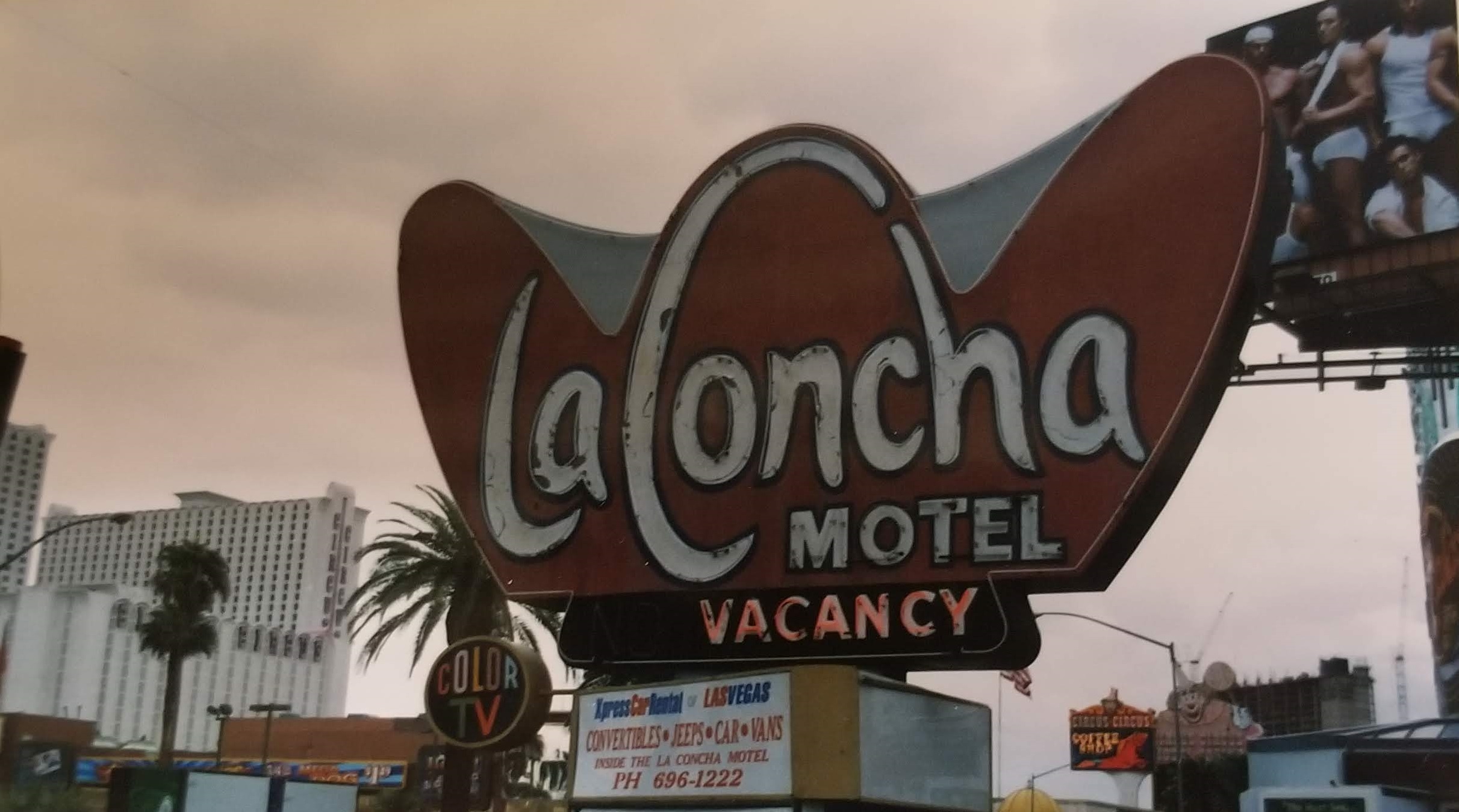
The case against Dozier hinged largely on the testimony of a few friends with criminal histories including Joe Wolslager, a fellow military veteran who said he’d sometimes get high with Dozier for days at a time. He described a breathless call he received from Dozier one night, in which Dozier said he had a guy in a suitcase and was on his way to the lake.
According to Wolslager, Dozier explained that he had been in the hotel room with Miller, who was relaxed and leaning in a chair, and he assured him they were going to make some money. Dozier said that’s when he shot him, Wolslager said.
Dozier went on to say he hung Miller up in the shower and slit his throat, according to Wolslager. To avoid getting DNA on his clothes, he stripped down naked as he was working with the lifeless body.
Jerry Wimberly, a neighbor of Dozier’s and a fellow meth user, had gone to the La Concha to buy meth. He testified that Dozier asked him to go into the bathroom to see something, and that’s when he saw the body of a man in the bathtub, with his detached head sitting on his chest and the shower running.
“That’s about all I needed to say,” Wimberly said during Dozier’s trial. “I almost threw up and I turned around. I left the room immediately.”
Wimberly testified that he recognized the man in the tub because they’d smoked meth together and he had taken Miller and his girlfriend to a drugstore to buy toiletries at one point. But he said Dozier didn’t say he killed Miller.
The head, Dozier allegedly told Wolslager, was in a 5-gallon bucket and wouldn’t be found. Another witness, La Concha employee Joe Minarcin, recalled loaning Dozier cement, a dolly and a bucket and never seeing them again.
At one point, police received information that the head might have been in a pool construction area at the La Concha. Metro excavated the area with a bulldozer, but never found the head.
Barbra Meagher, who knew she was one of Dozier’s many girlfriends but didn’t care, recalled seeing a big suitcase in the room when she visited him at La Concha for meth and sex. At a preliminary hearing, she said he seemed nervous and insinuated that he had shot someone.
And she recalled shopping bags from various stores — even something he bought her from a toy store.
She recalls a gun on the bedside table but said she didn’t call police “because I thought that I loved him.”
No blood found
Defense attorneys argued that there’s not nearly enough physical evidence at the alleged scene of the crime. Analysts who used the chemical Leucocrystal Violet to search for evidence of blood at motel rooms at the La Concha, which has since been demolished, found no signs of blood — an odd situation for the place where Jeremiah was supposedly shot, bled out, and possibly dismembered.
“Eight wine bottles of blood. Where is it?” defense attorney Clark Patrick said during closing statements, adding that Dozier didn’t need to testify to be not guilty. “Where and how did Jeremiah die? How was he dismembered?”
They called into question the theory that Dozier cleaned the scene with Oxiclean before giving the remainder of the cleaning product to a waitress from the Peppermill whom he had casually dated.
Oxiclean is not good at cleaning blood — experts say it must be concentrated to clean blood, that it creates foam that it doesn’t dissolve well in water and leaves a grainy residue.
“It would be very rare to not find any blood evidence at a homicide scene if bleeding was involved,” said George Schiro, a witness for the defense and a DNA lead at Acadiana Crime Lab in Louisiana.
Why was there no evidence of a close-range shooting, such as powder burns, stippling or gun residue? Why was there no evidence of a long-range shooting, such as blood spatter?
And the witnesses — the defense wrote off much of their testimony as the ramblings of people who were high during the entirety of the events they apparently saw and had been convicted of serious crimes themselves.
“The state has not provided you with enough evidence to prove Scott did anything, let alone beyond a reasonable doubt,” Patrick said.
The defense raised the prospect that Darryl — the Arizona drug dealer nicknamed “Grandpa” who loaned Miller money for the meth precursors — could have been to blame.
“‘Grandpa’ has a lot to lose, and is the only person never questioned,” Patrick said.
Douglas’ decision not to join her boyfriend Miller on his second trip to Vegas was also suspicious, Patrick said.
“Brandy didn’t want to be around when Grandpa found Miller stiffed him,” he said. “Why would Brandy think, so soon, that Jeremiah was missing? Did Brandy know something?”
The defense asked why police never followed up much on a bloody Yankees jersey that was found cut into three pieces and stuffed in a bucket near the Dumpster, or a lug wrench dropped nearby. The jersey tested positive for a female’s blood, but whose was it?
Imposing death
Jurors ended up convicting Dozier, but his lawyers sought to spare him from a death sentence.
“If you impose death on Scott Dozier … the methamphetamines win,” argued his lawyer, Alzora Jackson. “It’s just more killing, more carnage, more pain. You can stop it.”
According to a Las Vegas Review-Journal story from the time, Dozier’s lawyers sought a deal in which Dozier would have pleaded guilty to first-degree murder, accepted a life sentence, given up his appeals and told the Miller family what happened to their son.
But then-District Attorney David Roger rejected the compromise, saying a death penalty review committee had approved execution for Dozier and nothing had changed since then.
"This individual killed two people and he deserved the ultimate punishment," Roger said, according to the newspaper.
Giving up
Even before Dozier gave up his appeals and embarked on a long quest to the execution chamber, telling a judge last summer that “It’s been a long time, your honor. I’m ready to go,” lawyers at his trial opined that Nevada’s death penalty regime is a bit absurd.
“I was actually in the courtroom when that second to last individual was fighting to die, and he was arguing with the court to get it going,” said prosecutor Giancarlo Pesci. “And as surreal as that experience was, I think that’s highly indicative of the state of capital punishment in the state of Nevada at this time.”
Critics say it’s neither swift nor equally applied. Scott Coffee, a public defender and active death penalty case observer, likened the situation to state-assisted suicide.
Experts have determined that Dozier is competent enough to make the decision himself, even though a psychologist has said he has elements of “an antisocial personality disorder with narcissistic traits.” The psychologist observed that he’s manipulative and hypersexual, using his looks to get attention and requiring admiration from others.
A 2005 review concluded that Dozier had an above-average IQ, but also lacked empathy and believes he’s invincible. He exhibits “arrogant and overbearing behaviors fed by fantasies of unlimited success,” and has a “superficial or glib charm and a grandiose sense of self worth” that made him persuasive and “slick.”
Behind bars, he made a suicide attempt in 2004 after saving up his medications. But he didn’t have any major infractions in prison by the time his case went to trial — nothing more serious than having an extra pillowcase in his possession.
He told the Review-Journal he’s an atheist and doesn’t believe there will be life after death.
“I don’t have any grand expectations,” he said Sunday in a short phone call to a reporter. “I think it’s just done. I think it’s just black.”
But even though his life at Ely State Prison is somewhat comfortable — he does art, works out, listens to music and keeps in touch with family — his description of death row to the Reno Gazette-Journal is hardly more flattering than the infinite blackness he expects to meet shortly after 8 p.m. on Wednesday. It’s boring, it’s monotonous, it’s the same people over and over again.
“Life in prison isn’t a life,” he told the Las Vegas Review-Journal. “This isn’t living, man. It’s just surviving.”
